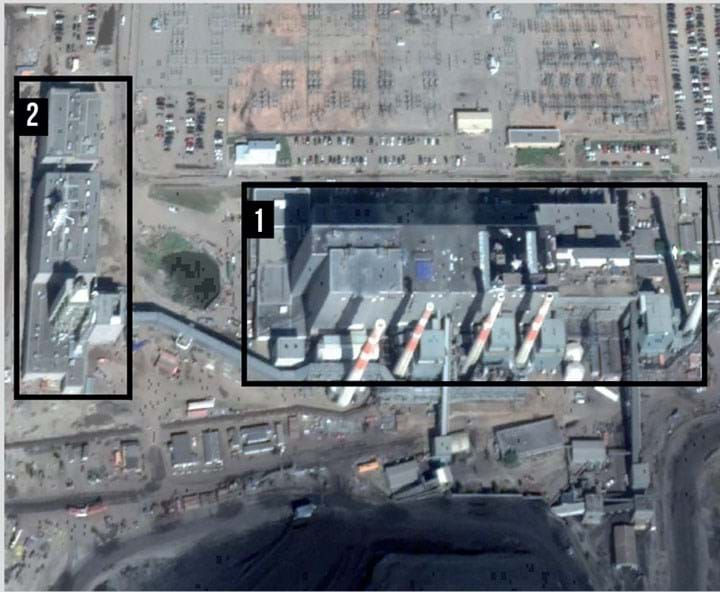Carbon Capture: But Not as We Know It
Rotating packed beds can play a part in making carbon capture smaller and cheaper
CLIMATE change is the most important long-term issue facing humanity. It is now clear that the sum consequences of business-as-usual CO2 emission would place severe strains on global food security and water supply, causing substantial damage to social, economic, and political stability. For chemical engineers, addressing climate change is fundamental to our professional integrity, especially given our discipline’s historical interrelationship with the fossil fuel and petrochemical industries.
Renewables, nuclear power, energy efficiency improvements, and changes in energy use will go a long way to reducing CO2 emissions. However, carbon capture and sequestration – the process of separating CO2 from emissions and storing it, mostly underground in geological formations known as saline aquifers – will also play a significant role. Carbon capture is required for achieving the Paris agreement targets in the majority of pathways outlined by the IPCC. Carbon capture will be necessary to reach net-zero targets in the coming decades. In the power sector, the intermittent energy supply from renewables currently requires dispatchable power generation from fossil fuels (typically gas-turbine power plants). While it is worth noting that advances in energy storage and use, such as vehicle-to-grid charging, will reduce this demand significantly in the future, capturing carbon from power generation could also be an option to decarbonising energy supply.
However, recently the focus of efforts in carbon capture has shifted away from energy generation towards industrial processes. Industrial processes are responsible for 31% of global CO2 emissions. These emissions could be controlled through carbon capture and sequestration in process industry clusters. Examples have been reported in previous editions of The Chemical Engineer. In these proposals, emissions from several industrial processes are brought together, and feed into one pipeline, for sequestration offshore. The Norway Full Chain CCS project will demonstrate this approach at full scale. This will sequester CO2 from industrial processes (cement-making and waste-incineration), transporting CO2 by shipping and pipelines to a storage site in the North Sea. The Porthos project in Rotterdam is another process industry cluster CCS project. Concentrated on providing a pipeline and storage service to companies in Rotterdam, this project will receive a final investment decision in early 2021. In the UK, the commitment to achieve net-zero by 2050 has renewed interest in carbon capture. This year, the UKRI Industrial Decarbonisation Challenge is funding a £170m (US$221.7m) project aimed at decarbonising the UK’s process industry clusters. This will include an industrial-scale demonstration of CCS technology.
The state of the art
There are many alternative separation unit-operations available or in development for carbon capture. Amine-based carbon capture is the most mature technology in this field. Readers may be familiar with amine-based natural gas sweetening processes, used for H2S and CO2 removal from natural gas. The carbon capture process is similar, instead treating the post-combustion flue gas to remove CO2. The CO2 is removed from the flue gas stream in a packed column, by reactive absorption with the amine. The amine loaded with CO2 then passes to a regeneration column, releasing the separated CO2. The main energy demand in the process comes from the reboiler and is typically met using low-pressure steam. Full-scale demonstration plants currently operate at Boundary Dam in Canada and Petra-Nova in the US. Recently, influential researchers, such as Ben Anthony of Cranfield University, UK, have made the case for rapid deployment of amine-based carbon capture, based on its technological maturity.
Previous delays in economic and political action to prevent climate change mean that we must now concentrate on achieving carbon capture using existing demonstrable technologies.
We no longer have the luxury of waiting for new technology to make carbon capture cheaper. It is also the case however that the size and capital cost of full-scale carbon capture is a hurdle to widespread use. Carbon capture (for power plants particularly) requires very large plants. Taking the Boundary Dam plant as an example, the retrofitted carbon capture plant is comparable in overall size to the original power plant (see Figure 1). Given our ongoing work in this area we want to share our thoughts on how the size of these carbon-capture
facilities could be reduced through process intensification, using rotating packed beds.

Rotating packed beds
Recent Editions
Catch up on the latest news, views and jobs from The Chemical Engineer. Below are the four latest issues. View a wider selection of the archive from within the Magazine section of this site.




